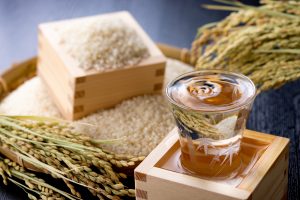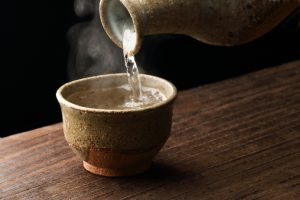What is Sake?

1.What is Sake?
Sake, also known as "seishu" (clear sake), is a traditional Japanese alcoholic beverage produced through a unique brewing process rooted in Japan's climate and environment. With a history spanning over a thousand years, sake embodies Japanese culture and history, as its production reflects the local climate and land. This document explores sake’s origins, brewing process, drinking styles, regional characteristics, health benefits, and other aspects to uncover the rich world of sake.
2.History and Origins of Sake
The origins of sake date back to ancient times, as early as the Yayoi period (300 BC–300 AD), when rice cultivation began in Japan. In ancient Japan, rice was considered sacred, and sake was integral to religious rituals. Early Japanese made "kuchikami-zake," a form of sake in which rice was chewed and fermented with enzymes from saliva, and it was used in ceremonies.
By the Heian period (794–1185), sake had become essential in aristocratic life and evolved as part of noble culture. During the Sengoku period (1467–1603), temples and castle towns became sake production hubs, and by the Edo period (1603–1868), sake was widely distributed thanks to an expanding transportation network. This distribution fostered the development of local sake varieties that reflected each region's climate, water quality, and unique environment, laying the foundation for the local sake culture seen today.
3.Sake Brewing Process and Multiple Parallel Fermentation
The brewing process for sake is highly complex. Although it uses simple ingredients—rice, water, and koji (malted rice)—the process requires advanced techniques and precise control. Sake production begins with "polishing" the rice, a process in which the outer layers are removed. The higher the polishing rate, the higher the quality of the sake, which influences its aroma and flavor. After polishing, the rice is steamed and koji mold is added to make "rice koji." Water and yeast are then added to the rice koji to create a starter mash called "shubo."
One key feature of sake brewing is "multiple parallel fermentation," a process where starches are converted to sugars (saccharification) and sugars are simultaneously converted to alcohol (fermentation). This method creates sake’s complex, rich flavors but requires a high level of expertise and careful control by skilled brewers known as toji.
The fermented mash, or "moromi," is then pressed, filtered, and pasteurized to complete the sake. Throughout this process, factors such as temperature, humidity, and fermentation progress are meticulously managed, and it takes considerable skill and knowledge from various craftsmen to produce each brand. This intricate process results in the distinct, layered flavors unique to sake.
4.Types and Characteristics of Sake

Sake is broadly categorized into the following types:
Junmai-shu: Made solely from rice, rice koji, and water, emphasizing the rich flavor and depth of rice. This type pairs well with food due to its robust flavor.
Ginjo-shu: Brewed at low temperatures over an extended period, highlighting a fragrant aroma and a light, refined taste. Best enjoyed chilled to bring out its fragrance.
Honjozo-shu: A small amount of brewing alcohol is added for a clean, crisp flavor. This type has a light, refreshing aftertaste and pairs well with various dishes.
Sake is also classified by sweetness (amakuchi) or dryness (karakuchi) and light (tanrei) or rich (noujun) flavors, making it an ideal complement to meals, as different types can be selected based on the occasion or food pairing. In addition, sparkling sake and low-alcohol types have also been introduced, and they have become popular among sake beginners, women, and people from overseas.
5.Drinking Temperature and Flavor Variations
Sake is unique in that its flavor changes with the drinking temperature, generally categorized as follows:
Cold (5–20°C): Chilling enhances fruity aromas and creates a light, refreshing flavor, particularly suited for ginjo-shu. Ideal as an aperitif or paired with light dishes.
Room Temperature (called hiya, 20–30°C): Allows the sake’s natural flavor to emerge, bringing out the depth of the rice’s taste.
Warm (30–55°C): Heating increases sake’s richness, making it suitable for junmai-shu and honjozo-shu. The flavor deepens as the temperature rises.
Sake has unique names for different temperature ranges: "yukihie" for 5°C, "suzuhie" for 15°C, "hitohada-kan" for 35°C, "atsukan" for 50°C, and "tobikirikan" for 55°C and above. These names reflect the poetic beauty of Japan’s sake culture, enhancing the enjoyment of a single sake at various temperatures.
6.Sake and Food Pairing
While sake pairs exceptionally well with Japanese cuisine, it also complements dishes from other cuisines, such as French, Italian, and Chinese. The amino acids in sake enhance umami flavors in food, making it easy to match with a variety of cuisines.
Examples of Sake and Food Pairing
Junmai-shu: Its rich rice flavor pairs well with stews, hot pots, and grilled fish, making it ideal for hearty dishes as it enhances the umami in food.
Ginjo-shu: With a fruity, aromatic profile, ginjo-shu complements light dishes like salads, carpaccio, and tempura, adding a refreshing accent to simple dishes.
Honjozo-shu: Known for its clean, crisp taste, it works well as a palate cleanser for richer or oilier dishes. It pairs seamlessly with Western and Chinese dishes due to its versatile flavor.
Sake’s regional varieties are well-suited to the local cuisines, adding depth to the cultural experience. For instance, the dry sakes from the Tohoku region pair with seafood, while the mellow sakes from Kyushu complement dishes with bolder flavors, reflecting the local climate and food culture in the sake.
7.Health Benefits of Sake
In moderate amounts, sake is considered beneficial for health. Sake contains amino acids and polyphenols with effects such as improved circulation, antioxidant properties, and skin health benefits.
Increased Body Temperature: Sake warms the body, aiding blood circulation and helping alleviate coldness. Sake is particularly noted for its strong circulatory effects compared to other alcoholic beverages.
Skin Health: Rich in beneficial components, sake is also used in cosmetics and bath products. Kojic acid from koji is known for improving skin tone and reducing spots and dullness.
Antioxidant Effects: Sake has antioxidants that remove active oxygen from the body, potentially helping to prevent aging and cancer.
In this way, sake goes beyond a simple beverage, containing elements that support health and beauty when enjoyed in moderation.
8.Regional Sake Culture and Brand Diversity
Another appeal of sake is the diverse range of flavors and brands across different regions. Sake from colder northern areas tends to be dry and crisp, while those from warmer southern regions are often mellow and slightly sweet. This diversity arises from variations in climate, environment, and water quality, allowing for a unique flavor experience in each region.
Nada (Hyogo Prefecture): Known for its “miyamizu” water, producing dry, sharp sakes.
Fushimi (Kyoto Prefecture): Uses soft water for mellow, slightly sweet sakes.
Niigata Prefecture: Known for light, dry sakes made with snowmelt, featuring a clean, refreshing taste.
Additionally, famous brands representing different regions, such as Dassai from Yamaguchi, Juyondai from Yamagata, and Kokuryu from Fukui, are highly regarded both domestically and internationally, highlighting the diversity of sake. Tasting different brands from each region reveals the depth and variety of sake culture.
Conclusion: The Depth and Appeal of Sake
Sake is a beverage with countless varieties and flavors, produced from the simple ingredients of rice and water. Deeply connected to Japan’s traditional food culture, sake is a cherished part of Japanese life. Enjoying sake alongside local cuisine allows one to experience Japan’s distinctive food culture, and its popularity continues to grow both in Japan and abroad.
To gain a deeper understanding of sake, tasting different types and visiting breweries are highly recommended. Learning about each brand and region’s characteristics enhances the enjoyment of sake and reveals the profound culture behind it.



